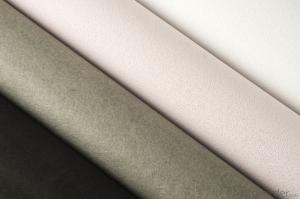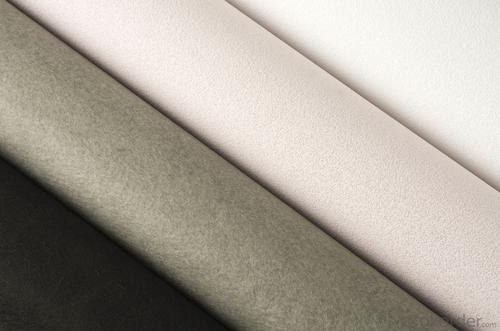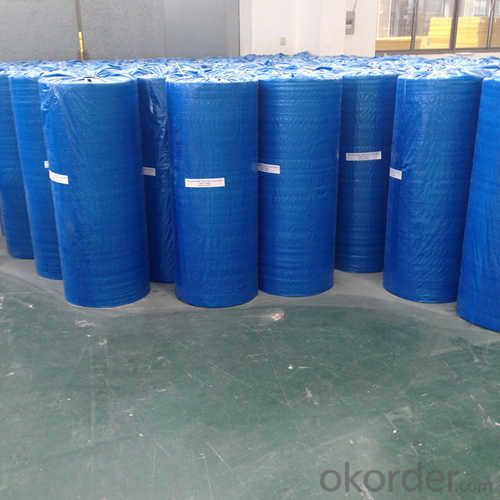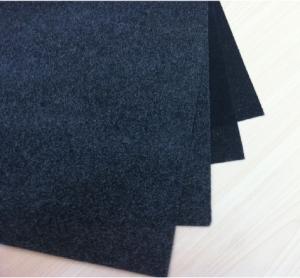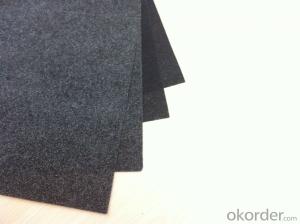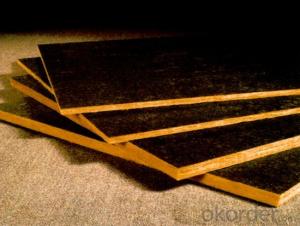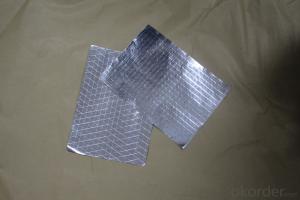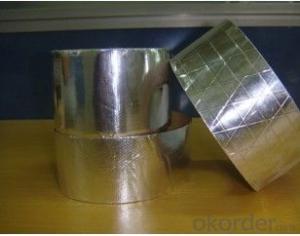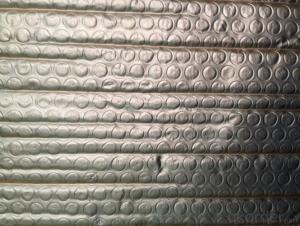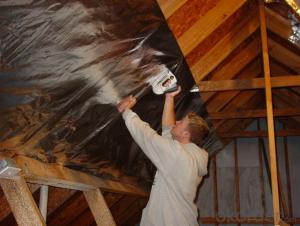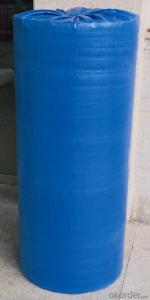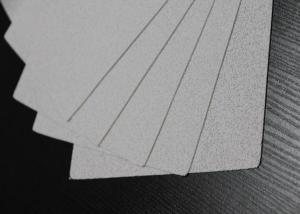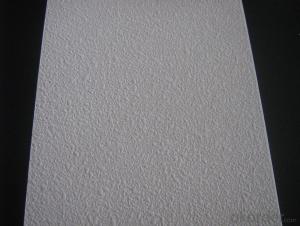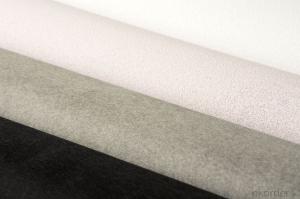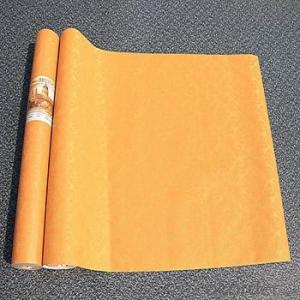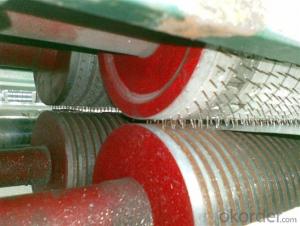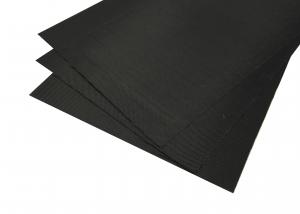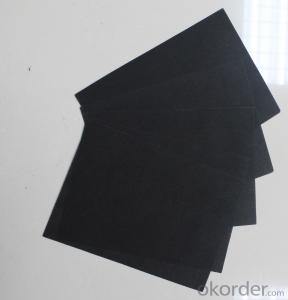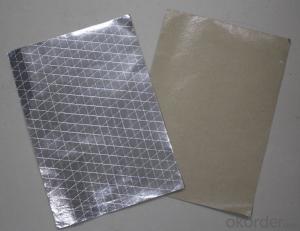Fiberglass Facing White Scraping Coating Tissue for Decoration and Acoustic - S101
- Loading Port:
- Shanghai
- Payment Terms:
- TT OR LC
- Min Order Qty:
- 500 m²
- Supply Capability:
- 100000 m²/month
OKorder Service Pledge
OKorder Financial Service
You Might Also Like
Introduction of Fiberglass Tissue
Fiberglass Tissue is a kind of facing, which is made of by the white fiberglass tissue, and special production process.
Application of Fiberglass Tissue
Our black tissue are mainly used as facing for glass wool insulation, rockwool, mineral wool etc. Also fiberglass tissue facing is used under roof decking, under attic rafters, over existing attic thermal insulation, in floors, walls and crawl spaces, and in industrial and commercial buildings to block radiant heat coming into house through the roof during the summer and retain indoor heat generated during in winter
Advantage of Fiberglass Tissue
Light weight
• High manufacturing accuracy
• High strength
• Small inertia resistance
• Strong heat dissipation ability
• Good visual effect
• High reflective insulation
• Heat resistant, water proof, stable at high temperature;
• Environmentally friendly, no smell and not-toxic;
• Smooth and clear surface;
Packing of Fiberglass Tissue
1. Waterproof paper then PVC shrinking Film
2. Water-Proof film only
3. Woven cloth
4. Kraft paper or Water Proof Film then Metal/wooden pallet
5. (Also as your request. )
Specification of Fiberglass Tissue
Specification | ||
ITEM | UNIT | VALUE |
Type | E | |
Weight | g/m2 | 120 |
Thickness | mm | 0.4 |
Oxygen Index Number | % | ≥32 |
Tensile Strength MD | n/125px | 130 |
Tensile Strength CMD | n/125px | 110 |
Fire Resistant Property | B1 | |
Pictures of Fiberglass Tissue
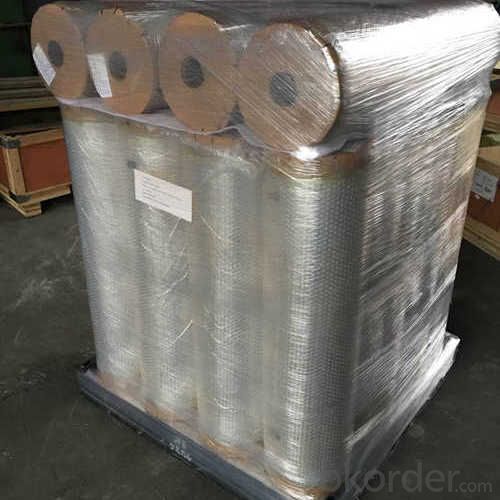
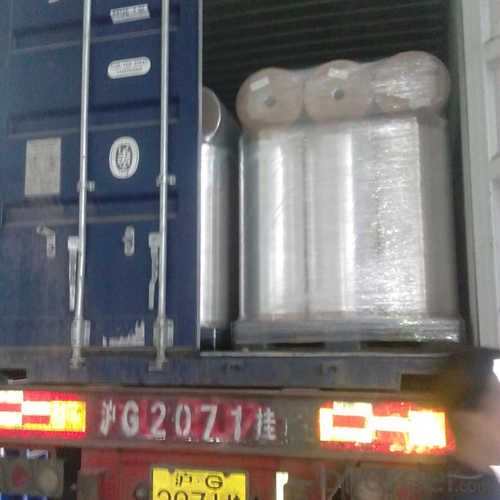
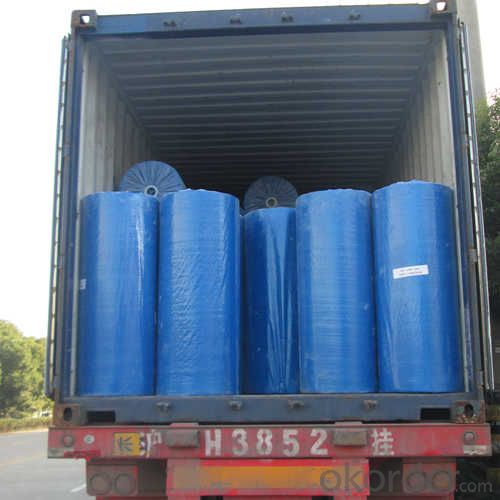
FAQ
We have organized several common questions for our clients,may help you sincerely:
1. What is the storage condition?
The Aluminum Foil Facing should be stored at room temperature and kept from wet and heat source.
2. How to guarantee the quality of the products?
We have established the international advanced quality management system,every link from raw material to final product we have strict quality test;We resolutely put an end to unqualified products flowing into the market. At the same time, we will provide necessary follow-up service assurance.
3. How long can we receive the product after purchase?
In the purchase of product within four working days, we will arrange the factory delivery as soon as possible. The specific time of receiving is related to the state and position of customers. Commonly 7 to 10 working days can be served.
- Q: This question asks for methods to clean black fiberglass tissue, which is a material often used in various industries and applications.
- <p>To clean black fiberglass tissue, follow these steps: First, use a soft brush to remove any loose dirt or debris. Avoid using abrasive materials that could scratch the surface. Next, mix a solution of mild detergent with warm water. Dampen a soft cloth or sponge in the solution and gently wipe the fiberglass tissue. Rinse the area with clean water to remove the detergent, and then dry it thoroughly with a clean, soft cloth to prevent water spots. For stubborn stains, consider using a fiberglass-specific cleaner, but always test on a small, inconspicuous area first to ensure it doesn't discolor the material. Regular cleaning will help maintain the appearance and longevity of the black fiberglass tissue.</p>
- Q: How is fiberglass facing installed?
- Fiberglass facing is typically installed in a few simple steps. First, the surface where the fiberglass is going to be installed should be clean, dry, and free of any dust or debris. This ensures proper adhesion of the facing. Next, the fiberglass facing is carefully unrolled and cut to the desired size, making sure to leave a little extra material on each side to ensure complete coverage. The facing is then positioned over the surface and pressed down firmly, starting from the center and working towards the edges. To secure the fiberglass facing in place, an adhesive or adhesive tape is applied along the edges, ensuring a tight seal. It is important to smooth out any wrinkles or air bubbles that may have formed during the installation process. In some cases, mechanical fasteners such as staples or nails may be used to further secure the fiberglass facing, especially in high-impact areas or where extra reinforcement is needed. Overall, the installation of fiberglass facing is a relatively straightforward process that requires attention to detail and proper surface preparation. Following these steps will ensure a successful installation that provides durability and protection.
- Q: What are the potential drawbacks of using fiberglass facing?
- There are several potential drawbacks of using fiberglass facing in various applications. Firstly, one major drawback is the health hazards associated with fiberglass. Fiberglass is made up of tiny glass fibers that can easily become airborne when disturbed. Inhaling these fibers can cause respiratory issues, skin irritations, and even long-term health problems such as lung diseases. Therefore, proper safety precautions, including wearing protective clothing and masks, need to be taken when working with fiberglass. Another drawback is the potential for fiberglass to degrade over time. Exposure to extreme heat or sunlight can cause the fiberglass to become brittle and crack. This can lead to reduced insulation properties and decreased durability of the material. Additionally, fiberglass is susceptible to moisture absorption, which can cause it to deteriorate and lose its effectiveness. Furthermore, fiberglass facing may not be as effective in certain applications compared to alternative materials. For example, fiberglass may not provide sufficient insulation in areas with high humidity or where there is a risk of water leakage. In these situations, other materials such as foam or foil-faced insulation may be more suitable. Additionally, fiberglass facing can be more expensive than other options. While fiberglass itself is relatively affordable, the cost of installation and maintenance can be higher due to the need for specialized equipment and safety measures. This can make fiberglass facing less cost-effective, especially for smaller projects or those on a tight budget. Lastly, fiberglass facing can be challenging to work with. The material is rigid and can be difficult to cut, shape, and install properly. It requires specific tools and expertise to handle fiberglass effectively, which may limit its accessibility for DIY enthusiasts or inexperienced individuals. In summary, the potential drawbacks of using fiberglass facing include health hazards, degradation over time, limited effectiveness in certain applications, higher costs, and the difficulty in working with the material. It is essential to carefully consider these factors before deciding to use fiberglass facing and to ensure proper safety measures are in place when working with this material.
- Q: Is the use of black fiberglass tissues safe in residential or commercial settings without taking any specific safety measures?
- <p>While black fiberglass tissues can be used in homes or businesses, it's important to take necessary precautions. Fiberglass is made of fine glass fibers that can be inhaled and may cause irritation to the skin, eyes, and respiratory system. Always wear protective gear such as gloves, goggles, and a mask when handling fiberglass. Ensure proper ventilation to avoid inhaling fibers and clean up carefully to prevent the spread of fibers around the area. Consult material safety data sheets (MSDS) for specific safety instructions related to the product you are using.</p>
- Q: Is the use of black fiberglass scraps considered safe in construction projects?
- <p>The use of black fiberglass scraps in construction work is generally not recommended due to safety and quality concerns. Black fiberglass scraps may contain impurities and inconsistencies that can compromise the structural integrity of the construction. Additionally, they can pose health risks due to the inhalation of fiberglass particles, which can cause respiratory issues. It's crucial to use high-quality, undamaged materials that meet safety standards to ensure the safety of both the construction workers and the longevity of the construction project.</p>
- Q: Is it possible to utilize black fiberglass tissue in the manufacturing of medical equipment?
- <p>Black fiberglass tissue is not typically used for medical equipment due to concerns about material safety, biocompatibility, and the potential for color-related issues in a medical context. Medical equipment often requires materials that are transparent or easily visible to ensure cleanliness and proper functioning. Additionally, materials used in medical applications must be non-toxic, resistant to corrosion, and able to withstand sterilization processes. While fiberglass can be used in some industrial applications, its use in medical equipment is limited and would require specific qualifications and approvals, focusing on white or clear forms that are more common in this industry.</p>
- Q: Is it appropriate to utilize black fiberglass tissues for cleaning up liquid spills on hard surfaces?
- <p>Yes, you can use black fiberglass tissues for wiping up spills on hard surfaces. They are designed to be strong and absorbent, making them suitable for cleaning up liquids. However, it's important to ensure that the hard surface is not damaged by the abrasiveness of the fiberglass. Always test on a small, inconspicuous area first to confirm it's safe. Additionally, be cautious as black tissues may leave fibers or color transfer on light-colored surfaces.</p>
- Q: This question asks for methods to properly store and transport black fiberglass tissue, a material that requires careful handling to maintain its integrity.
- <p>To effectively store and transport black fiberglass tissue, ensure the following: Store the tissue in a cool, dry place away from direct sunlight to prevent degradation. Use airtight containers or wrappings to protect it from moisture and dust. When transporting, use a clean, dry vehicle and avoid stacking heavy items on top to prevent compression damage. Secure the material to prevent shifting during transit. Handle the tissue with clean, dry hands or gloves to avoid contamination. Always follow the manufacturer's guidelines for specific storage and transport recommendations.</p>
- Q: This question asks about the ease of installation and maintenance of a flooring system constructed from black fiberglass scraps.
- <p>Installing and maintaining a flooring system made from black fiberglass scraps can be relatively easy, especially if the scraps are in good condition and the system is designed for easy installation. Fiberglass is known for its durability and resistance to moisture, which can reduce maintenance needs. However, the ease of installation can vary depending on the complexity of the system and the individual's experience with construction or flooring work. Proper sealing and finishing are crucial to prevent moisture absorption and to maintain the flooring's integrity. Regular cleaning and periodic inspections can help maintain the flooring system's condition.</p>
- Q: Is it possible to recycle black fiberglass materials without causing damage to them?
- <p>Yes, black fiberglass tissues can be recycled without damaging them, but the process requires specific methods. Specialized facilities are equipped to handle the recycling of fiberglass materials, including colored ones. They use techniques such as shredding and melting to separate the glass fibers from other components and reuse them in new products. It's important to note that not all recycling facilities may accept black fiberglass due to the dye, which can complicate the recycling process. Proper segregation and recycling guidelines should be followed to ensure the materials are handled correctly and without damage.</p>
Send your message to us
Fiberglass Facing White Scraping Coating Tissue for Decoration and Acoustic - S101
- Loading Port:
- Shanghai
- Payment Terms:
- TT OR LC
- Min Order Qty:
- 500 m²
- Supply Capability:
- 100000 m²/month
OKorder Service Pledge
OKorder Financial Service
Similar products
Hot products
Hot Searches
Related keywords
